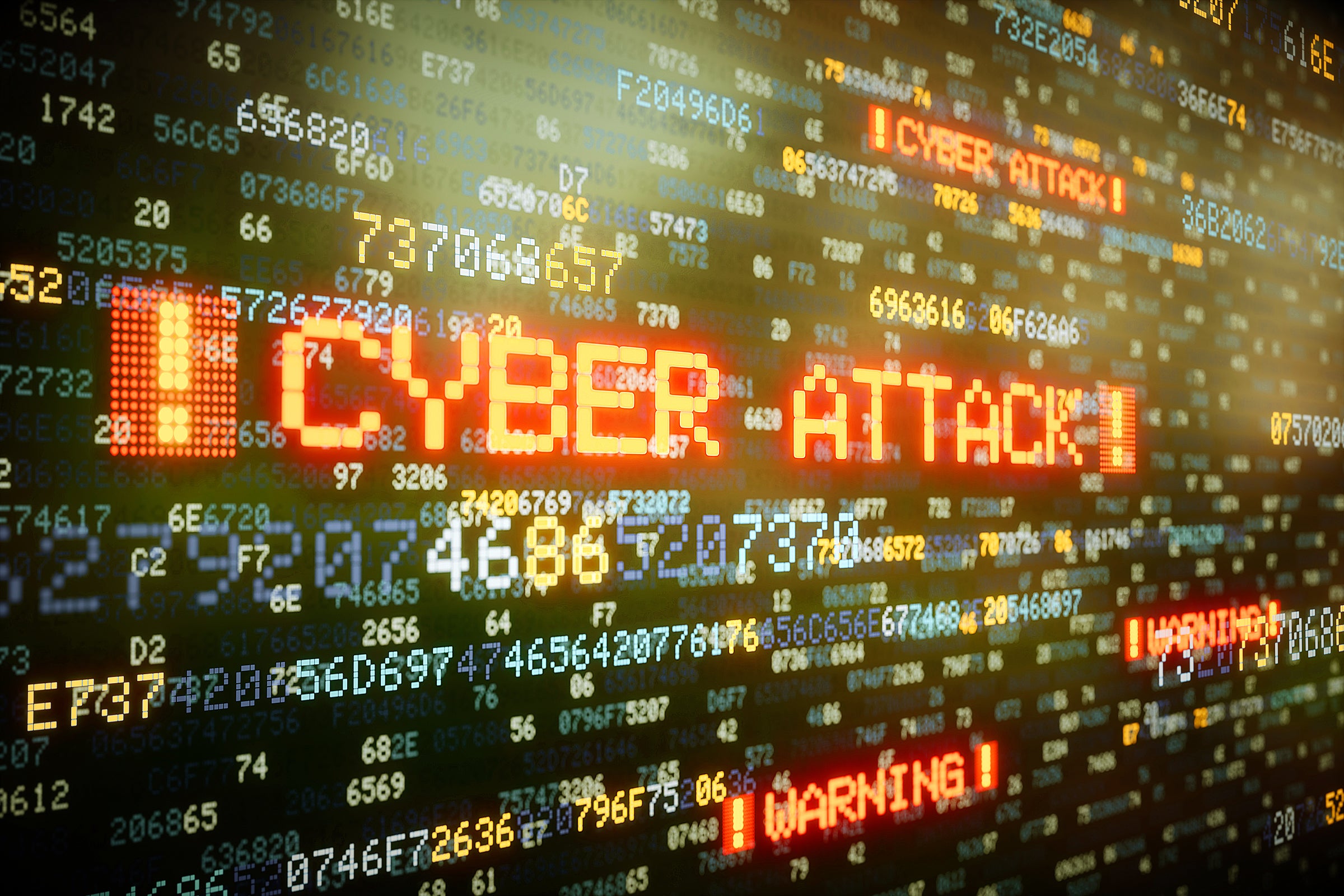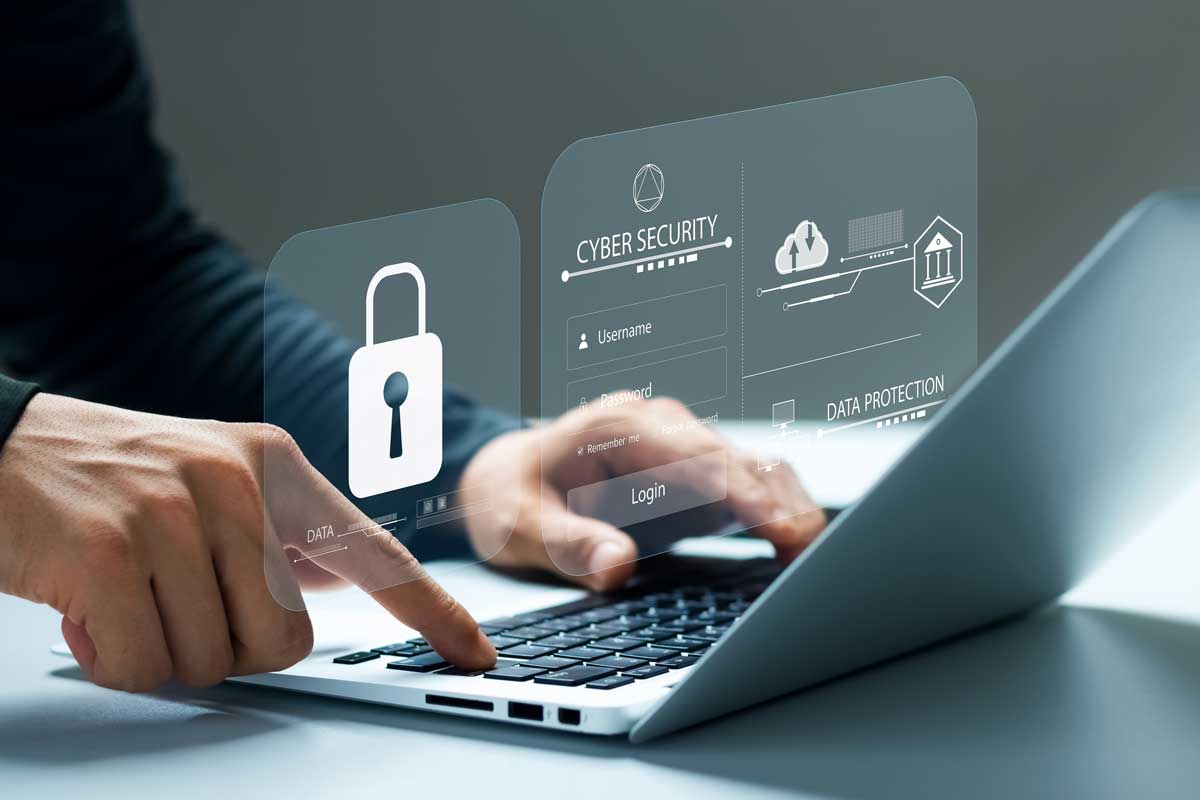Cyberattacks occur when cybercriminals attempt to illegally access electronic data stored on a computer or network, and may be intended to cause reputational damage or harm to a company or person, or to steal valuable data, and cyberattacks focus on the theft of sensitive or personal information (phishing), or blocking access to all data for ransom (ransomware), as well as causing serious damage to computer systems with a view to causing certain harm, how do you protect your business from illegal cyberattacks?, Read on for possible solutions to protect against such attacks.

What are cyberattacks?
Cyberattacks are a malicious and deliberate attempt by an individual or organization to infiltrate an individual's or other organization's information system, and the attacker usually seeks to obtain some kind of benefit from disrupting the victim's network, using methods such as malware, phishing, ransomware, or mediator attack.
Types of cyberattacks
Understanding the different types of cyberattacks is essential for companies to recognize and respond to potential threats. Perhaps the most prominent cyberattacks are:
1. Malware
Malware is spyware, ransomware, viruses and worms, which penetrate the network through a security vulnerability, usually installed through a dangerous link or email facility, malware has been written to exploit weaknesses that have not been addressed by the system manufacturer or IT team.
2. Trolling
Phishing attacks in cyberattacks depend on means of communication such as email to convince you to open the message and follow the instructions inside, and if you follow the instructions of the attackers, they will have access to personal data, such as credit cards, and can install malware on your device.
3. Plagiarism
Cyber attackers sometimes mimic people or companies to trick you into giving up your personal information. This can happen in different ways. A common spoofing strategy involves using a fake connected ID, where the person receiving the call does not see the number as fake. Other spoofing methods also include sabotaging facial recognition systems, using a fake domain name, or creating a fake website.
4. DoS denial of service attacks
The DoS denial-of-service attack begins with a wide range of malware-infected host devices controlled by the attacker, and these attacks are referred to as "denial-of-service" attacks because the victim's location is unable to provide service to those who wish to access them, and when the DoS attack occurs, the target site is flooded with illicit requests.
5. Ransomware
Ransomware is a type of malware as we have indicated, where the ransomware attack downloads ransomware, Either from a website or from an e-mail facility The ransomware then encrypts the target's workstation, Sometimes, ransomware can be used to attack multiple parties by blocking access to many computers or a central server necessary for business operations.
How do you protect your business from illegal cyberattacks?
Cybercriminals use different methods to launch cyberattacks, this may include malware, phishing, ransomware or other methods, as we indicated at the outset, and to protect yourself from such attacks you need to follow the following tips:
1. Raising awareness among all staff
The first thing to do is to make all employees aware of cyber threats: email alerts, password strengths, software updates, data encryption, and everyone should be aware of good practices and should strictly apply them, this is the best solution to avoid cyber attacks.
2. Access to control system
To prevent cyber attacks in the business, it is also necessary to put in place strong internal controls, as access controls will help ensure that access to the system is immediately updated once employees, contractors and suppliers leave the enterprise, and access control to the system is essential to prevent cyber attacks.
3. Regular backups of data
Regular backups should be made, on an external broker, of all the data on your computers, such media can be external hard drives and/or cloud systems, and in this way, in the event of an attack, you will be able to recover your saved data.
4. Multi-factor authentication
One of the most effective ways to prevent cyberattacks is to ensure that multi-factor authentication is enabled for all enterprise Internet-accessible applications only one password may not be sufficient for employees, and if an employee's passwords are hacked through a scam or scam Internet criminals may have easy access to systems, and enabling a multi-factor authentication process for login operations will require staff to provide multiple credentials instead of just one As a result, security will be enhanced, and it will be very difficult for any unauthorized person to access systems.
5. Use firewalls and antivirus
Security breaches and cyber attacks should be prevented by installing antivirus software, as each computer in the enterprise should have antivirus software installed, after which it should be updated regularly, also make sure that the firewall is always in place.
6. Insurance against cyberattacks
Internet risk insurance is a means to protect against the risks of hacking, cyberattacks, computer misuse or data theft and will take care of external and harmful information technology risks and those related to human errors, Thus, cybersecurity insurance can take into account all losses associated with such cyberattacks as loss of sales, and ransom fees, preserve the company's electronic reputation, etc.
7. Updates constantly
OS versions that solve security gaps should be updated regularly, as every OS and every computer software used by your company should be constantly updated once a new version is available.
Conclusion:
Cyber attacks represent an escalating threat in our digital age and can target any individuals, groups or institutions using methods such as malware, phishing, ransomware and intermediary attacks, Thus, the use of preventive strategies, as well as vigilance and continuous education in the evolving landscape of cyberthreats and the implementation of the right security measures, This is an important step on track that can help organizations protect their digital assets.
Other topics :
References:
1. < < What is cybersecurity and why is it important? > >، simplilearn.
2. < < Protect your business: Emerging eRisk Management Strategies > >, bworldonline.

Add New Comment